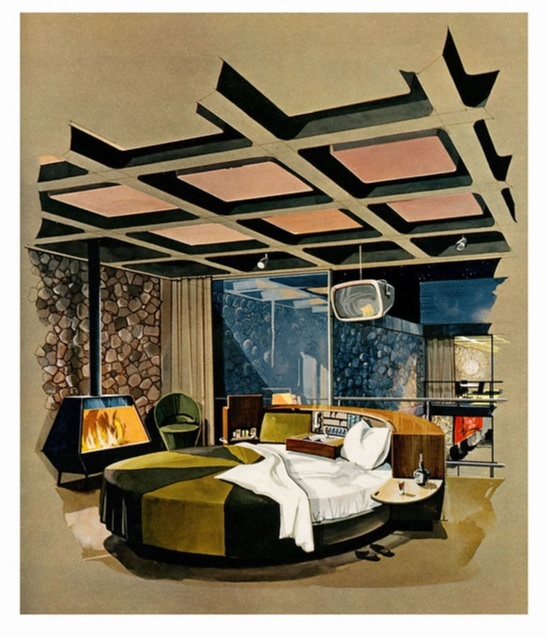Why is Modern Design Employed to Reinforce the Concept of Villainy in Film? Immorality and Modernism in the Contemporary Villain’s Lair.
Throughout the past four years of undertaking an undergraduate degree in Interior Design, I’ve cultivated a curiosity for how spaces and objects convey stories, and have found joy in uncovering the layers of meaning embedded in them throughout my thesis research. This essay topic succinctly captures my enthusiasm for the role architecture, interiors and furniture play in film, and in particular how set design is employed to provide subtle insights into characters and the plots that are woven around them.
My essay, an edited version of my undergraduate thesis, focuses on the trope in cinema of Modern design and evil. I find antagonists are often the most fascinating to watch on film, and the domestic spaces that they inhabit usually trump the dwellings of their protagonist counterparts, and perfectly reflect their warped preoccupations and ambitions. Positioning interior design within the context of film, my essay sets out to examine contemporary depictions of the villain’s lair and the role interior spaces play in reinforcing the concept of villainy.
My research probes how Modernist utopian aspirations became subverted, so that Modernism is now associated as dystopian and oppressive in popular culture, by considering Modern design as a performative tool in hegemonic masculinity and capitalism’s appropriation of Modern design. An emphasis is placed on the mid-century Playboy bachelor pad as an intersection of the theoretical underpinnings of performing gender, hedonistic consumerism and Modern design, which is recontextualised as a template for the contemporary villain’s lair. While the villain’s affinity to Modernist design transcends genres of film and indeed brands of villainy, the case study analysed in this edited essay is Alex Garland’s Ex-Machina (2015). The science fiction thriller focuses on a central villain who reinforces the existing patriarchal structures of power by attempting to dominate the natural world through artificial intelligence. Donna Haraway’s “A Cyborg Manifesto” and Michel Foucault’s Heterotopias are some of the theoretical frameworks deployed to uncover the layers within the lair. The paper ultimately interprets the Modern villain’s lair as a microcosm of the injustices and inequality that patriarchy and capitalism perpetuate, which are deployed by the case study not only as a social critique of contemporary society but also as an impetus to inspire social change.
Key to this research and essay was the support of a brilliant thesis supervisor, Dr Sorcha O’Brien, who shared my enthusiasm for the subject. Many of the themes that shaped this essay first ignited my interest during the Design History and Material Culture lectures that she conducted in my third year of study. Thank you, Sorcha, for your guidance, and thank you to the Design History Society for the award.
- Emma Gill, BA Interior and Furniture Design graduate, Technological University Dublin

Categories
Contribute
Want to contribute to the blog and newsletter? Contact us
Newsletter
Keep informed of all Society events and activities, subscribe to our newsletter.
